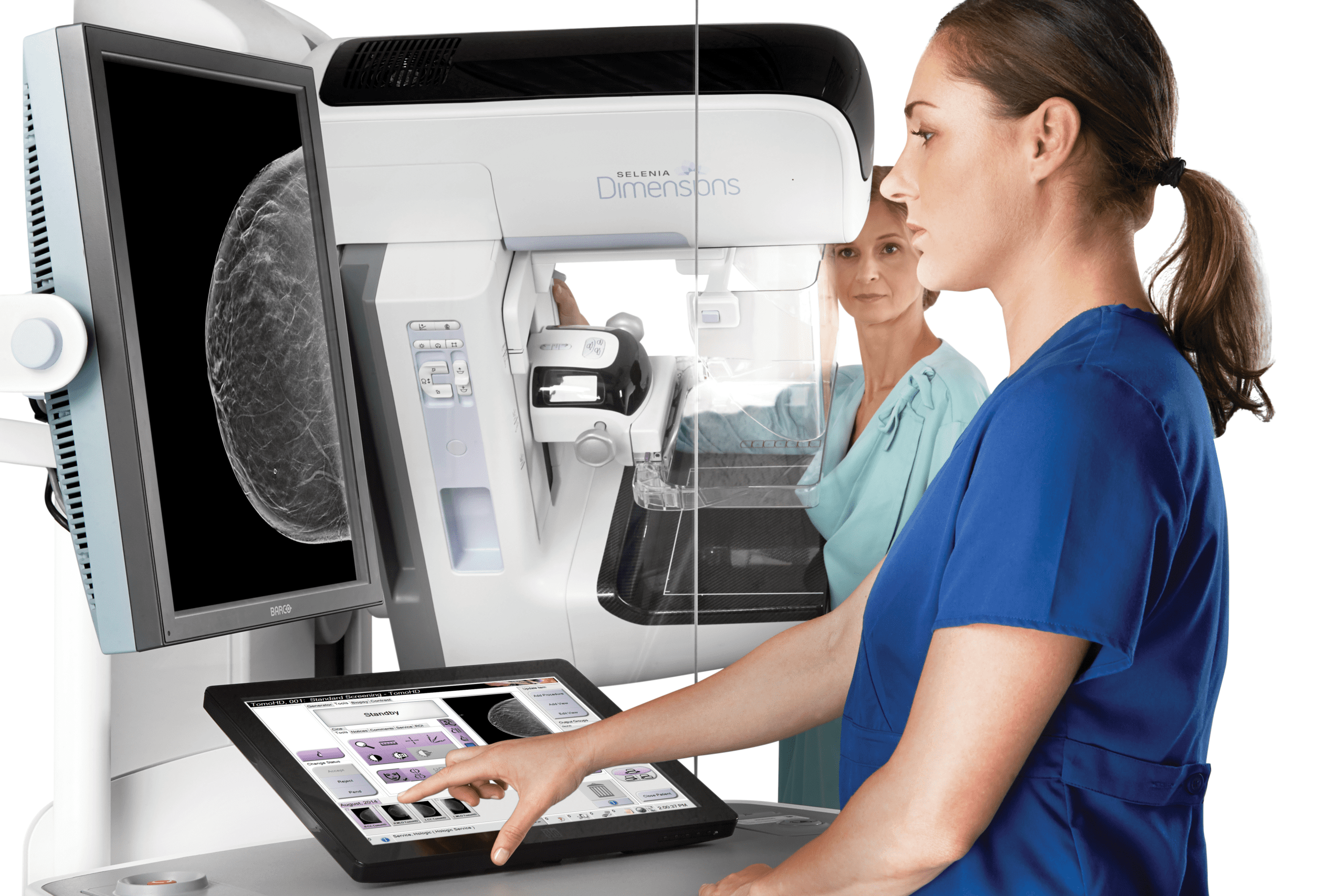Mammography
Mammography is a specific type of breast imaging that uses low-dose x-rays to detect cancer early—before women experience symptoms—when it is most treatable. Mammography plays a central part in the early detection of breast cancers because it can show changes in the breast up to two years before you or your physician can feel them. The American Medical Association (AMA) and the American College of Radiology (ACR) recommend annual mammograms for women over 40. The National Cancer Institute (NCI) adds that women who have a personal or family history of breast cancer should talk to their doctor about when they should begin screening.
Breast Imaging also includes other modalities such as ultrasound and MRI to allow for better detection and characterization of cancers. These have specific roles in the workup of breast findings and lesions. Breast tomosynthesis, also known as 3D mammography, is a recently developed type of breast imaging which goes beyond traditional mammograms to provide a more detailed evaluation of the breast. This has been shown to increase the sensitivity of mammography studies and decrease the number of false positives.
Once a lesion is found that cannot be ruled benign, a breast biopsy is required to obtain samples for analysis by pathologists to determine whether it is a form of cancer. Because most of these lesions are small at the time of detection, imaging guidance is necessary to ensure proper sampling. Biopsies may be performed under ultrasound guidance, x-ray guidance (stereotactic biopsy), or MRI guidance.
Preparation
Before scheduling a mammogram, the American Cancer Society (ACS) and other specialty organizations recommend that you discuss any new findings or problems in your breasts with your doctor. In addition, inform your doctor of any prior surgeries, hormone use, and family or personal history of breast cancer.
Do not schedule your mammogram for the week before your menstrual period if your breasts are usually tender during this time. The best time for a mammogram is one week following your period. Always inform your doctor or x-ray technologist if there is any possibility that you are pregnant.
The ACS also recommends you:
- Do not wear deodorant, talcum powder or lotion under your arms or on your breasts on the day of the exam. These can appear on the mammogram as calcium spots.
- Describe any breast symptoms or problems to the technologist performing the exam.
- Obtain your prior mammograms and make them available to the radiologist if they were done at a different location. This is needed for comparison with your current exam and can often be obtained on a CD.
For further information please select from the exams below:

Skagit Radiology is proud to partner with Skagit Valley Hospital to provide superior breast imaging at the Women’s Imaging Center.
Please contact the Women’s Imaging Center at 360-428-7270 to schedule a mammogram.
 (360) 428-7275
(360) 428-7275